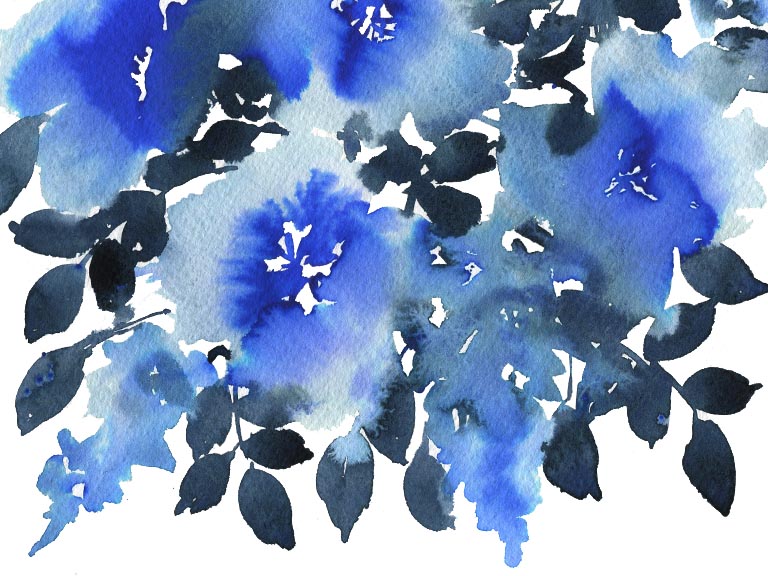Learning to paint watercolour flowers is tricky, especially if you want to paint in a loose expressive style, because this involves limiting the level of detail in your paintings.
When I started painting florals, a lot of work turned into colourful blobs! There are so many flowers out there in the world each with amazing colours, petals and combinations, I found it overwhelming! Even their leaves are all different.
But the truth is that there are only a few shapes in the world of flowers, and if you learn these, you’ll be able to paint any type of flower. In this guide we’re going to look at the most common flower types and practice painting them, so you can apply them to any floral combination you like.
5 petal flower
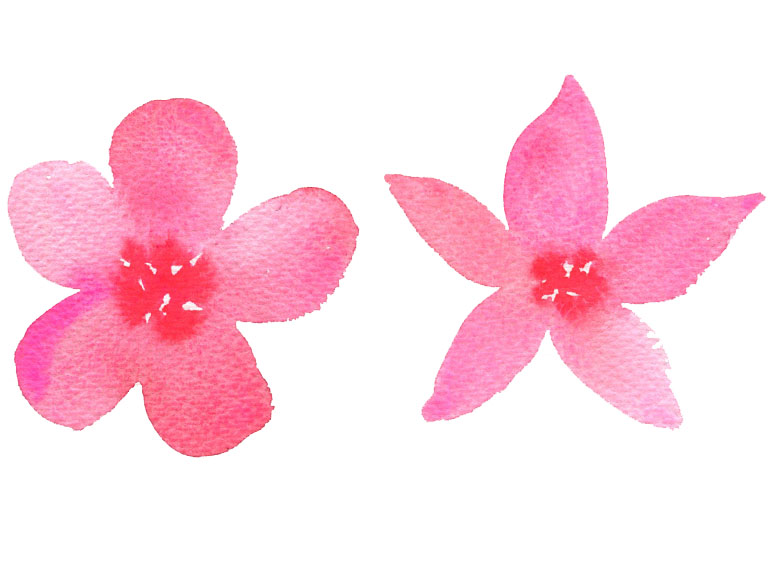
Five petal flowers are the most common types of flowers and probably the one you remember drawing when you were a child. As you can imagine, these flowers have five petals! The first petal usually points upwards and from there you can arrange four more petals around the centre at equal intervals to create a star shape.
Your five-petal flower can have rounded or pointed petals and they can be thin or broad. Choose any colour combination you like and add darker paint in the centre to finish.
Common five petal flowers: spring blossom, periwinkle, hibiscus and forget-me-not.
4 petal flower
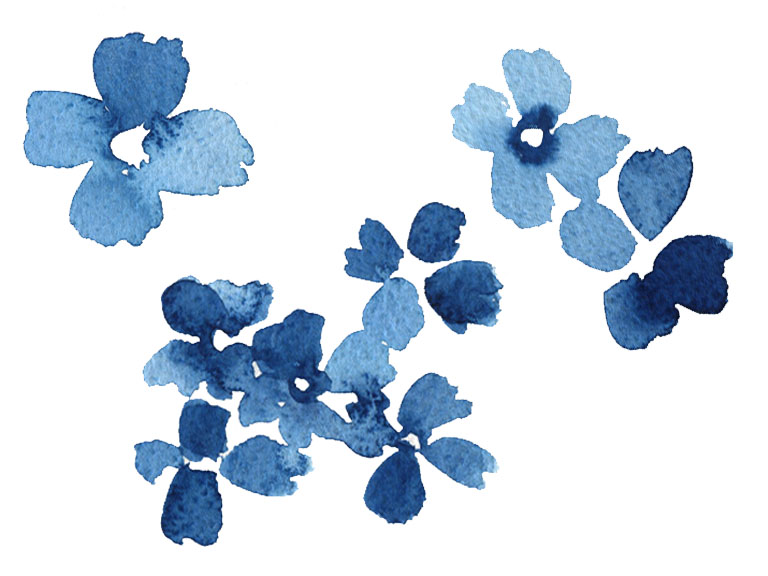
Four petal flowers are a great technique if you want to learn filler flowers. They are great for bulking out a bouquet or filling gaps in any floral composition. These easy flowers have four petals around a central circle which I like to leave blank. I prefer to have flat or rounded edges rather than points, but you can experiment to see what style suits you.
Paint lots of these little flowers together in a combination, allowing them to touch and bleed together, and you can easily create flowers like hydrangea or delphinium. One of my favourite tricks is to paint the petals in a pale colour then add a darker circle in the middle and allow it to bleed out.
More four-petal flowers include wallflowers, lilac and evening primrose.
6 petal flower
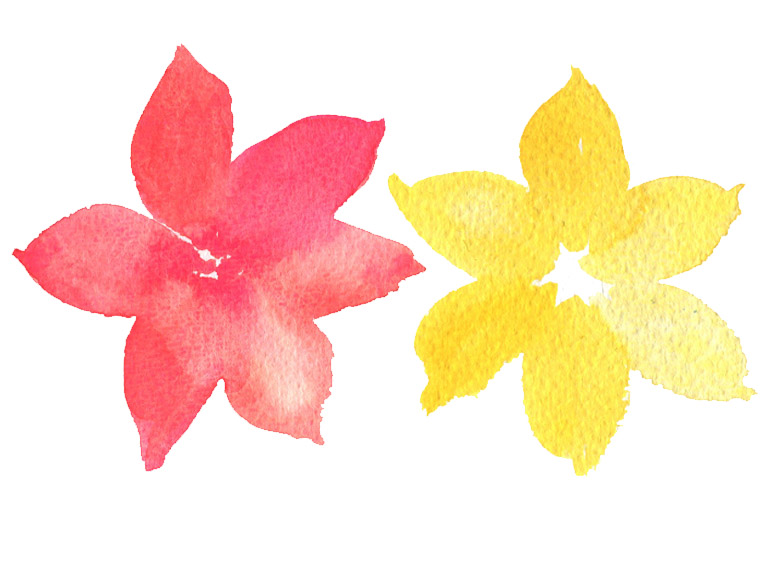
I’m sure you can guess what this one is already! Six petal flowers indeed have six petals. They can have a straight line across, like the flower on the left, or a vertical line through the top and bottom, like the right-hand flower above.
As you’re painting your flower, make sure you’re thinking about making the petals different colours or tones. Perhaps add more water or a different colour and then allow them to touch. This simple technique will prevent the flower from turning into a ring of colour and like a blobby donut.
Six petal flowers include: anemone, daffodils, clematis, poppy, lily and iris.
Daisy shape flowers
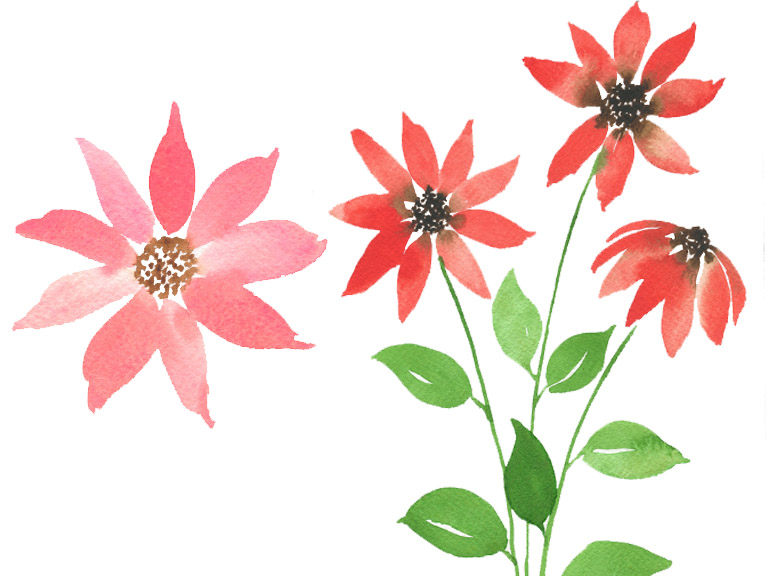
Another really common flower shape is a daisy. These elegant flowers have a dotted centre in a dark or brown colour. Use the tip of your brush to create a circle of dots and then wash off your brush and pick up your petal colour.
Touching the tip of your brush to the edge of the circle of dots, pull and drag your brush out in a long stroke and lift up towards a tip to create the petal. Keep following all the rules of changing the colour and value as you go around, and you’ll have a pretty daisy flower!
Coneflower shapes
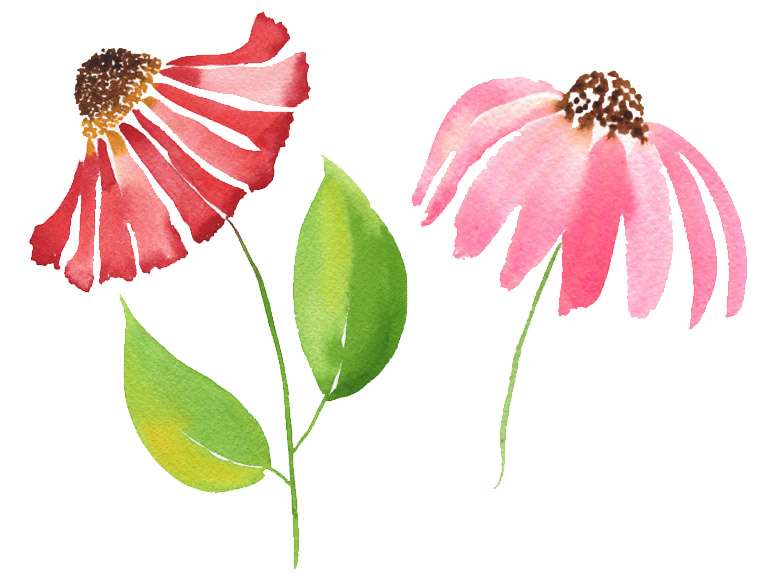
Coneflower shapes are very similar to daisies but with the centre at the top of the flower and the petals coming down underneath. Paint a half circle of your dots, then pull the petals down underneath. When you get to the edges, make the petals more curved and thinner and add a stem to finish.
This shape is perfect for helenium and coneflower paintings.
Spiral and rose shapes
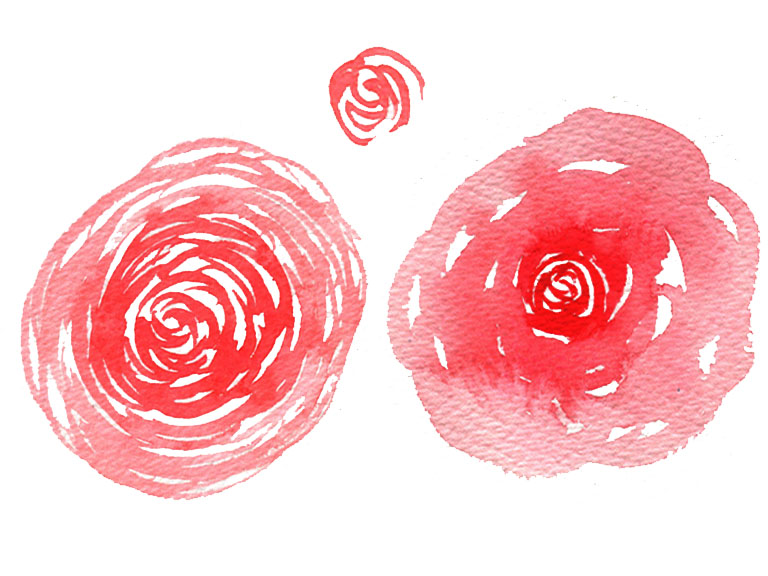
Spiral and rose flower shapes are those going round in a spiral or a circle, in a densely packed centre that opens out. For this you will need to create thin C-curves, making sure to leave white space between them. Start in a dark colour and then get lighter as you go around building more and more curves. Make them longer and lighter as you go and to build out your flower shape. In the example you’ll see this technique is perfect for ranunculus flowers or other ones with tightly packed centres.
This is also the perfect technique to paint roses in watercolour. Simply make your curves thicker and lighter as you go around, letting that dark centre bleed out.
Learn more with my watercolour roses tutorial here.
Bell and cup shaped flowers
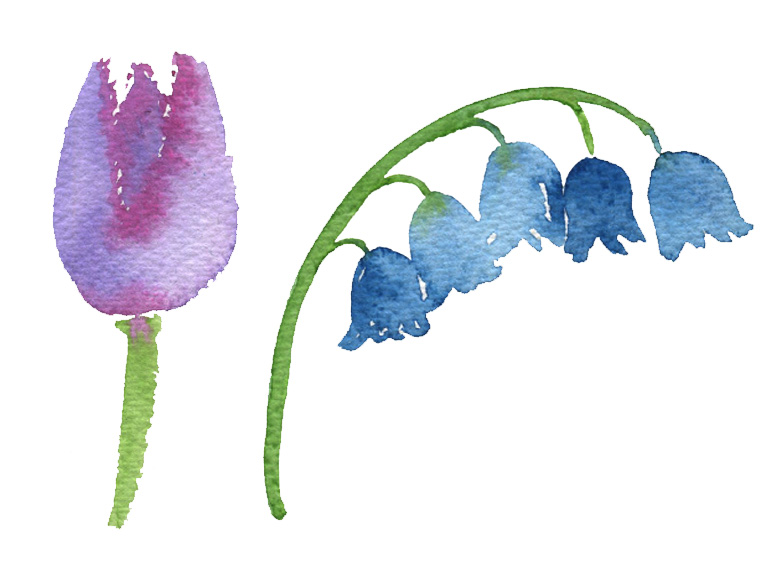
Flower shapes in a bell or cup usually are only visible from the outside. That means you need to focus on the outline or silhouette of your shape. For large cup shapes like tulips, make sure to leave white space between the petal shapes to keep them separate, so they don’t turn into one big blob.
For a smaller bell shape like bluebells or fuchsia, focus on creating multiple flower heads and flared details at the ends. In the bluebells example you can see how the blue tones that I’m using are different and create good contrast as your eye travels along the flower curve.
More bell and cup shaped flowers include crocus, lily of the valley and foxgloves.
Frilly and blowsy shapes
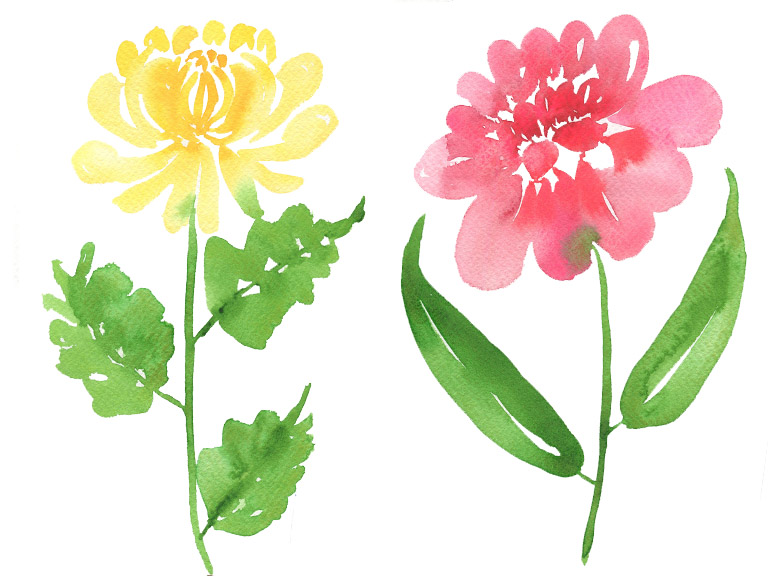
For frilly, blowsy and busy flowers you need to break them down into smaller sections. For example, if you look at the dahlia you can see that it starts in the centre with just a small five petal star shaped flower. Then we carry on building adding more petals in rings around that centre. I’m allowing each petal to touch all of its neighbours and varying the colour and value as I go. For big flowers, make sure you leave lots of white space for contrast and prevent everything mixing together and making a hot mess.
Just keep building your layers in rings until you’re happy with the shape of your flower.
Other shapes are carnations and crysanthemums.
Now you’ve mastered these key flower shapes you should be able to take this and paint any type of flower you see in your garden or florist. You’ll see these shapes repeated everywhere in the natural world and it makes it really easy to render them in watercolour.
If you’re struggling to see the shape of a flower, try starting from the centre to break it down.
Watercolour flowers guide
Download my free watercolour supply guide
Feeling overwhelmed and confused by watercolour paints, papers and brushes? Download my free guide filled with insider info, including a list of good supplies for every budget, and my complete supply list!
